Faculty Publications
2024 Faculty Publications
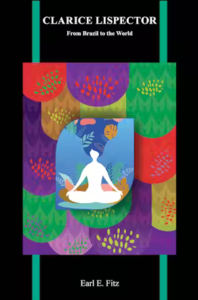 Earl E. Fitz
Earl E. Fitz
CLARICE LISPECTOR: FROM BRAZIL TO THE WORLD. Purdue University Press, 2024.
2023 Faculty Publications
 Earl E. Fitz
Earl E. Fitz
THE LITERATURES OF SPANISH AMERICA AND BRAZIL: FROM THEIR ORIGINS THROUGH THE NINETEENTH CENTURY. University of Virginia Press, 2023.
2019 Faculty Publications
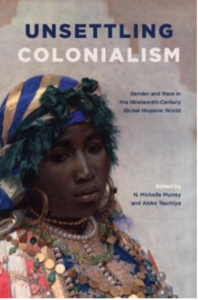 Michelle Murray
Michelle Murray
UNSETTLING COLONIALISM: GENDER AND RACE IN THE NINETEENTH-CENTURY GLOBAL HISPANIC WORLD. State University of New York Press.
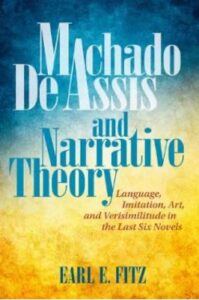 Earl E. Fitz
Earl E. Fitz
MACHADO DE ASSIS AND NARRATIVE THEORY. Lewisburg: Bucknell University Press, Bucknell Studies in Latin American Literature and Theory.
2018 Faculty Publications
 Michelle Murray
Michelle Murray
HOME AWAY FROM HOME: IMMIGRANT NARRATIVES, DOMESTICITY, AND COLONIALITY IN CONTEMPORARY SPANISH CULTURE.
 José Cárdenas Bunsen
José Cárdenas Bunsen
LA APARICIÓN DE LOS LIBROS PLÚMBEOS Y LOS MODOS DE ESCRIBIR LA HISTORIA: DE PEDRO DE CASTRO AL INCA GARCILASO DE LA VEGA. Madrid: Vervuert-Iberoamericana.
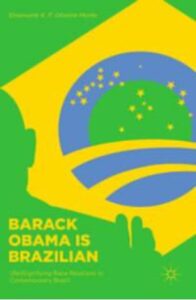 Emanuelle K. F. Oliveira-Monte
Emanuelle K. F. Oliveira-Monte
BARACK OBAMA IS BRAZILIAN (RE)SIGNIFYING RACE RELATIONS IN CONTEMPORARY BRAZIL. Palgrave Macmillan.
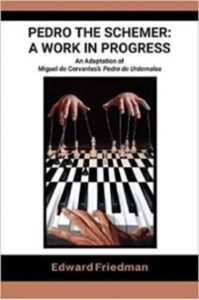 Edward Friedman
Edward Friedman
PEDRO THE SCHEMER: A WORK IN PROGRESS. AN ADAPTION OF PEDRO DE URDEMALAS BY MIGUEL DE CERVANTES. Newark, DE: Juan de la Cuesta, 2018. 101 pp.
2017 Faculty Publications
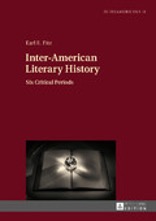 Earl E. Fitz
Earl E. Fitz
INTER-AMERICAN LITERARY HISTORY: SIX CRITICAL PERIODS. Frankfurt am Main: Peter Lang Edition, 2017. 436 pp.
Previous Publications
Andres Zamora: FEATURING POST-NATIONAL SPAIN: FILM ESSAYS. Liverpool: Liverpool University Press, 2016. 206 pages.

Trigo Beningo: MALADY AND GENIUS: SELF-SACRIFICE IN PUERTO RICAN LITERATURE. SUNY series, Insinuations: Philosophy, Psychoanalysis, Literature 2016

SAINT CHRISTOPHER: A NOVELLA. Dartmouth, MA: Tagus Press at UMass Dartmouth, 2015.
Written by Jose Maria de Eca de Queiros. Translated from the Portuguese by Gregory Rabassa and EARL E. FITZ. Forward by Carlos Reis.

MACHADO DE ASSIS AND FEMALE CHARACTERIZATION: THE NOVELS Lewisburg: Bucknell University Press, 2015 By Professor Earl Fitz

The AmeRícan Poet: Essay on the Works of Tato Laviera. New York: Centro de Estudios Puertorriqueños, 2014.

Looking Out, Looking In: Anthology of Latino Poetry. Houston: Arte Público Press, 2013. Edited By William Luis

Trigo B. Kristeva’s Fiction / Edited by Benigno Trigo. State University of New York Press; 2013.

Jrade, Cathy L.; Karageorgou-Bastea, Christina (eds.): Poetics of Hispanism (Ediciones de Iberoamericana, 65) 264 p., ISBN 9788484897132, 29,80 € eBook ISBN 9783954870707 Vervuert
An exciting conceptual thread in most of the contributions in this volume, a thematic undercurrent, might be the relationship between the intimate and the political, the personal and the historical. The different essays by specialists such as Gwen Kirkpatrick, Bruno Bosteels, Michelle Clayton or Roberta Quance, touch upon poetry as the discursive link between the subject and the world, the voice and its others, always in a relation withnormative social restrictions. For some of the authors, intimacy is a critical perspective; in other cases, it informs their analysis thematically. Intimacy involves an interpellation, not a mere reading that joins together the text and the reader; finally, as the other face of history, poetic intimacy reveals the complexities of enthusiasm and resentment as social affects. Cathy L. Jrade is Chancellor's Professor of Spanish and Chair of the Department of Spanish and Portuguese at Vanderbilt University in Nashville, Tennessee.Christina Karageorgou-Bastea is Associate Professor of Spanish at Vanderbilt.

Edward Friedman's play Crossing the Line: A Quixotic Adventure in Two Acts, inspired by Don Quixote, was published by Juan de la Cuesta (2012).

Inter-American Literature: A concise history, by Earl E. Fitz
The Scholar Collection, 2012.

Lope de Vega, El castigo sin venganza, ed. Edward H. Friedman
A student edition of Lope de Vega's play, edited by Edward Friedman, has been published by Juan de la Cuesta (2012).

Delmira Agustini (1886–1914) has been acclaimed as one of the foremost modernistas and the first major woman poet of twentieth-century Spanish America. Critics and the reading public alike were immediately taken by the originality and power of her verse, especially the aggressively sexualized perspective never before found in texts written by Spanish American women. Agustini sought, like the men around her, to free herself and her writing from traditional sexual limitations. Even more daringly, she responded to their language with her own feminized discourse, developing an innovative way of expressing her sexual and artistic aspirations.
In the first major exploration of Agustini’s life and work, Cathy Jrade examines the dynamics of her breakthrough poetics and the nature of poetic appropriation and invention. She demonstrates that, while presenting an intrepidly erotic stance, Agustini’s writings express innovative declarations of poetic goals.

The seventh edition of Aproximaciones, an introduction to the analysis of Hispanic literature, has been published. The book is coauthored by Edward Friedman, with Teresa Valdivieso and Carmelo Virgillo (McGraw-Hill, 2011).

Edward Friedman has published Into the Mist, a play based on Miguel de Unamuno's 1914 novel Niebla (Juan de la Cuesta, 2011).

Edward Friedman has published a translation of Leandro Fernández de Moratín's El sí de las niñas, titled The Little Woman (Juan de la Cuesta, 2010).

Bibliografía y antología crítica de las vanguardias en el Caribe: Cuba, Puerto Rico, República Dominicana by William Luis (2010)
Las vanguardias del Caribe florecen a partir de los primeros lustros del siglo XX. Éstas, aupadas por los movimientos que han comenzado a revolucionar la cultura europea desde finales del siglo XIX —tales como el impresionismo, el futurismo, el dadaísmo, el surrealismo, el ultraísmo, el cubismo, etc.—, representan una nueva cosmovisión que apuesta por una renovación del arte y del pensamiento decimonónico decadentes ya en los umbrales del siglo XX. Y es que los jóvenes vanguardistas de Cuba,Puerto Rico y República Dominicana vieron, desilusionados, cómo sus países nacieron y evolucionaron con las manos atadas, obli" gados a un destino ajeno y sin poder ejercer su propia voluntad. Ante esa experiencia, autores como Eugenio Florit, Mariano Brull, Nicolás Guillén, Luis Palés Matos o Manuel del Cabral buscaron nuevos modelos literarios, y muchos de ellos los encontraron en formas enraizadas en factores locales que expresaron el sentir de las incipientes culturas en cada nación. Surgen así distintas vertientes de la poesía negrista, !a la par que florece una poesía pura vanguardista, más cercana a los movimientos europeos, mientras que éstos, porsuparte, son objeto de ásperas críticas como la que lleva a cabo Alejo Carpentier. Además de una extensa bibliografía, este tomo ofrece una amplia antología de estudios críticos sobre los movimientos de vanguardia en el Caribe.

Coerced Confessions: The Discourse of Billingual Police Interrogations by Susan Berk-Seligson (2009)
Susan Berk-Seligson's Coerced Confessions: The Discourse of Bilingual Police Interrogations (Mouton de Gruyter). Provides empirical evidence of what can go wrong when police detectives serve as interpreters during custodial interrogations of Spanish-speaking suspects.Using discourse analysis for its methodological approach, the book presents a series of case studies, all of them involving suspects whose first language is not English. By revealing the communicative failures that come about when professional interpreters are not present at such police interrogations, the book uncovers a coercive factor in such speech events.

Arquitectónica de voces by Christina (2008)
Profesora Christina Karageorgou-Bastea ofrece un análisis de Poema del cante jondo que aspira, en principio, a influir sobre la manera como se piensa en la poesía de Federico García Lorca, y más ampliamente en la lírica, partiendo de las relaciones que el poeta establece con la pintura, la música, el teatro, el baile y la memoria cultural de su mundo. El libro juvenil de Lorca se orquesta sobre el encuentro de una multiplicidad de sujetos que articulan sus versos en armonía, contrapunto, disonancia; desde derroteros geográficos y culturales no por contiguos menos conflictivos.
Los acentos que construyen el espacio y la memoria del nómada y el sedentario, de la mujer y del fantasma histórico que la ensombrece, proliferan no sólo de sección en sección, sino en los escasos versos de un solo poema. La difícil convivencia de sujetos y la hibridación de estrategias expresivas exigen repensar la soberanía del yo y la uniformidad de su palabra poética. Con sus hablantes multitudinarios, su material visual, su música, baile, y actos dramáticos, Poema de cante jondo revela los límites de la tradición estética romántico-simbolista y obliga a una aproximación teórica nueva al género poético desde las vanguardias. El propósito de este ensayo es crear y poner en práctica un acercamiento nuevo al género poético así como lo exige García Lorca desde su escritura prima.

WRITING IDENTITY The Politics of Contemporary Afro-Brazilian Literature by Emanuelle Oliveira (2007)
In the late 1970s, Brazil was experiencing the return to democracy through a gradual political opening and the re-birth of its civil society. Writing Identity examines the intricate connections between artistic production and political action. It centers on the politics of the black movement and the literary production of a Sao Paulo-based group of Afro-Brazilian writers, the Quilombhoje. Using Pierre Bourdieu's theory of the field of cultural production, the manuscript explores the relationship between black writers and the Brazilian dominant canon, studying the reception and criticism of contemporary Afro-Brazilian literature. After the 1940s, the Brazilian literary field underwent several transformations. Literary criticism's displacement from the newspapers to the universities placed a growing emphasis on aesthetics and style. Academic critics denounced the focus on a political and racial agenda as major weaknesses of Afro-Brazilian writing, and stressed, the need for aesthetic experimentation within the literary field. Writing Identity investigates how Afro-Brazilian writers maintained strong connections to the black movement in Brazil, and yet sought to fuse a social and racial agenda with more sophisticated literary practices. As active militants in the black movement, Quilombhoje authors strove to strengthen a collective sense of black identity for Afro-Brazilians.

Juan Francisco Manzano, Autobiografia del esclavo poeta y otros escritos by William Luis (2007)
Autobiografía del esclavo poeta y otros escritos. Edición, introducción y notas de William Luis.
La autobiografía de Juan Francisco Manzano (1797-1853) es un testimonio único sobre la esclavitud, escrito en español por un esclavo. Su composición en 1835 fue posible gracias a los esfuerzos de Domingo del Monte, que alentó al poeta a escribir un relato autobiográfico. Manzano tuvo que aprender a leer y escribir antes de aventurarse a narrar los episodios de su vida en un manuscrito legible, aunque con multitud de errores. Para hacerla más accesible a los lectores Del Monte encomendó el manuscrito a Anselmo Suárez y Romero para que le diera forma e hiciera las correcciones necesarias. Suárez y Romero cumplió cabalmente con la petición, pero también modificó la vida del esclavo con la intención de que el testimonio cobrara mayor fuerza en favor de la abolición de la trata de esclavos y la esclavitud. Tanto la autobiografía original como la versión corregida por Suárez y Romero desaparecieron. El original, encontrado un siglo más tarde en la Biblioteca Nacional José Martí, fue publicado en 1937 por José Luciano Franco. La versión de Suárez y Romero, hallada a mediados de la década de los ochenta en la Biblioteca de Sterling de la Universidad de Yale e inédita hasta el momento, es la que se da a conocer a los lectores en este libro.

Translation and the Rise of Inter-american Literature by Elizabeth Lowe (Author), Earl E. Fitz (Author)
"A welcome addition to the Latin Americanist's toolkit."--Adria Frizzi, University of Texas at Austin
The past few years have seen an explosion of interest among U.S. readers for Latin American literature. Yet rarely do they experience such work in the original Spanish or Portuguese. Elizabeth Lowe and Earl Fitz argue that the role of the translator is an essential--and an often ignored--part of the reception process among English-language readers.
Both accomplished translators in their own right, Lowe and Fitz explain how stylistic and linguistic choices made by the translator can have a profound effect on how literary works are perceived by readers unfamiliar with a foreign language. They also point out ways in which the act of translation is critical to the discipline of comparative literature.
Touching on issues of language, culture, and national identity, Translation and the Rise of Inter-American Literature is one of the first book-length works in this newly emerging field. Combining theories and histories of literature, translation, reception, and cultural studies, it offers a broad comparative perspective rarely found in traditional scholarship.

El Català Antic by Professor Philip D. Rasico (November, 2006)
El Català Antic (469 pp.) is Professor Philip D. Rasico's seventh and most recent book consisting of an in-depth analysis of the evolution of the Catalan language, from the preliterary period through the late Middle Ages, with special attention given to the formation of the phonological system of the language within the comparative context of other Romance vernaculars, particularly those of the Iberian Peninsula and of southern France. The volume contains an important Introduction written by Josep Moran i Ocerinjauregui on the emergence of Catalan as a written language.

Cervantes in the Middle: Realism And Reality in the Spanish Novel from Lazarillo De Tormes to Niebla by Edward Friedman (2006)
Every narrative text will, in some form or another, tell a story. The narrator's (or narrators') input into that story will be meaningful in itself. That is, the act of storytelling contains its own story. The reader, then, will note two processes that occur simultaneously: story and discourse, the narrative events and the form of expression that gives structure to the action. Ultimately, the two elements should be contemplated in unison, as part of a dialectical relation between story and discourse. From the mid-sixteenth century, the Spanish picaresque novel moves realism forward, but the reader is also conscious of the act of narration, of the "self-fashioning" of the narrator/protagonist. This subgenre is key, because not only does it underscore the psychological progression of the lead character, but it also combines the intersection of realism and metafiction that will continue in the early seventeenth century in Don Quixote and, to greater or lesser degrees, in all forms of the developing novel. Don Quixote makes us aware of the process of literary creation by foregrounding readers and writers. In the "process," he manages to cover the big picture, dealing with issues such as history and historiography, truth, and human nature. What starts out as satire ends up as an exceedingly knowing and precocious model for the novel—and specifically as a model for experimental narrative. Cervantes in the Middle examines Don Quixote as a continuation of a narrative phenomenon highlighted in the picaresque and continued in later novels. The study explores approaches to the representation of reality, and the play of realism and metafiction, using as examples the unique depiction of the real world in Galdós's El amigo Manso and Unamuno's Amor y pedagogía and Niebla.

Remembering Maternal Bodies, Benigno Trigo (January 2006), Melancholy in Latina and Latin American Women's Writing.
Remembering Maternal Bodies is a collection of essays about the writings of several Latina and Latin American women writers who remember their mothers, and/or challenge our commonly held beliefs about motherhood and maternity, in an effort to stop depression and melancholy. It suggests that the widespread violent depression and sometimes suicidal melancholy that haunts our culture and society is the result of a terrible fantasy about the way we become ourselves. This fantasy has a matricide at its core, and this matricide will continue to have its depressing effect on us as long as it remains in place and invisible. The authors showcased in this book make visible this fantasy and change it in their works in an effort to bring us out of our depression and melancholy.

Brazilian Narrative Traditions in a Comparative Context by Earl Fitz (2005)
New York: Modern Language Association of America.

Earl Fitz, (2004) Comparative Cultural Studies and Latin America and Sophia A. McClennen.
West Lafayette, Indiana: Purdue University Press, 2004.
The genesis of the texts in the volume is in the growing conviction of the editors that, given its vitality and excellence, Latin American literature deserves a more prominent place in comparative literature publications, curricula, and disciplinary discussions. The editors argue that there still exists, in some quarters, a lingering bias against literature written in Spanish and Portuguese and that by embracing Latin American literature more enthusiastically, comparative literature in the context of comparative cultural studies would find itself reinvigorated, placed into productive discourse with a host of issues, languages, literatures, and cultures that have too long been paid scant attention in its purview.

Edward H. Friedman (Ed.). El caballero de Olmedo: Lope de Vega (Juan de La Cuesta Hispanic Monographs, 2004).

William Luis. Lunes de Revolución: Literatura y cultura en los primeros años de la Revolución Cubana (Madrid: Verbum, 2003). The book chronicles the 131-issue existence of Lunes de Revolucion, published March 23, 1959 to Nov. 6, 1961 as the literary supplement of Revolucion, which was the official newspaper of the 26 July Movement.

Edward H. Friedman. El cuento: Arte y análisis . Prentice Hall (2002).Selections by authors from Spain, Cuba, Bolivia, Peru, Ecuador, Argentina, Uruguay, Costa Rica, Venezuela, Mexico, Chile, Puerto Rico, Nicaragua, Colombia, and the United States, demonstrate the common themes of social hierarchy, the power of the imagination, human psychology, gender issues, justice, destiny, and the supernatural.

Benigno Trigo (2002) Noir Anxiety.
Among the elements that define the classic film noir-chiaroscuro lighting, voice-over narration, and such archetypal characters as the world-weary private eye and the femme fatale-perhaps no element is more responsible for the genre's continued popularity among movie buffs, filmmakers, and critics than the palpable sense of anxiety that emanates from the screen. Because the genre emerged in the shadow of the Second World War, this profound psychological and philosophical unease is usually ascribed either to postwar fears about the atomic bomb or to the reactions of returning soldiers to a new social landscape. In Noir Anxiety, however, Kelly Oliver and Benigno Trigo interpret what has been called the "free-floating anxiety" of film noir as concrete apprehensions about race and sexuality.
Applying feminist and postcolonial psychoanalytic theory to traditional noir films (Murder, My Sweet; The Lady from Shanghai; Vertigo; and Touch of Evil) and the "neo-noirs" of the 1970s, 1980s, and 1990s (Chinatown, Devil in a Blue Dress, and Bound), the authors uncover a rich array of unconscious worries and desires about ambiguous sexual, racial, and national identities, often displaced onto these films' narrative and stylistic components. In particular, Oliver and Trigo focus on the looming absence of the mother figure within the genre and fears about maternal sexuality and miscegenation. Drawing on the work of Freud and Julia Kristeva, Noir Anxiety locates film noir's studied ambivalence toward these critical themes within the genre's social, historical, and cinematic context.
Kelly Oliver is professor of philosophy and women's studies and Benigno Trigo is associate professor of Hispanic languages and literature, both at Vanderbilt University. Oliver is the author of five books, including Witnessing: Beyond Recognition (Minnesota, 2001). Trigo is author of Subjects of Crisis: Race and Gender as Disease in Latin America (1999).

Susan Berk-Seligson. The Bilingual Courtroom: Court Interpreters in the Judicial Process . The University of Chicago Press (2002).
The Bilingual Courtroom deals with aspects of linguistic pragmatics, specifically, legal discourse from the perspective of U.S. Latinos who appear in court. Using a variety of data-gathering approaches (e.g., ethnography, experimental design), and drawing on more than one-hundred hours of tape-recorded material gathered in municipal, state and federal courts in the U.S.A., Susan Berk-Seligson employs data analytical techniques that are both qualitative and quantitative in nature. She demonstrates that the presence of a court interpreter in judicial proceedings makes a difference in the way that those proceedings are carried out. As lawyers, judges, witnesses and defendants interact with the interpreter, mock jurors form judgments about persons testifying on the witness stand as well as about the lawyers who are questioning them. The research reveals that the court interpreter plays a crucial role in judicial proceedings, one that can make the difference between a witness or defendant appearing convincing, trustworthy, competent, and intelligent, or not. This book was a winner of the British Association for Applied Linguistics annual award for Outstanding Book in the Field of Applied Linguistics.

Benigno Trigo (Ed.). Routledge 2001. Michel Foucault's theories have played a powerful role in the intellectual life of Latin America. Within Latin American studies such concepts as the consciousness of the intellectual elite (letrados), the archive novel, the foundational fiction, and self-writing--all indebted to Foucault--are now the common currency of critical analysis. Foucault and Latin America is the first volume to trace the influence of Foucault's theories on power, discourse, government, subjectivity, and sexuality in Latin American thought.

Earl Fitz, (2001) Jorge Amado: New Critical Essays.
Keith H. Brower, Earl E. Fitz and Enrique Martinez-Vidal, editors. New York: Routledge, 2001.
In Jorge Amado: New Critical Essays, sixteen of the world's leading Latin American Studies scholars provide a comprehensive survey of Amado's works, addressing his religion and his revolution, his portrayals of women, his place in postmodern reconstruction, and his legacy in Brazil.

Edward H. Friedman (Introd.). Don Quixote. Signet Classics (2001). Originally published in two parts in 1605 and 1615, Don Quixote stands as Cervantes' belated but colossal literary success. A work which has achieved mythic status, it is considered to have pioneered the modern novel. Don Quixote, a poor gentleman from La Mancha, Spain, entranced by the code of chivalry, seeks romantic honor through absurd and fantastic adventures. His fevered imagination turns everyday objects into heroic opponents and stepping stones to greater glory; each exploit serves as a comic, yet disturbing commentary on the psychological struggle between reality and illusion, fact and fiction. This celebrated translation by Charles Jarvis offers a new introduction and notes which provide essential background information.

Earl Fitz. Sexuality and Being in the Poststructuralist Universe of Clarice Lispector: The Differánce of Desire . University of Texas Press (2001).
Driven by an unfulfilled desire for the unattainable, ultimately indefinable Other, the protagonists of the novels and stories of acclaimed Brazilian writer Clarice Lispector exemplify and humanize many of the issues central to poststructuralist thought, from the nature of language, truth, and meaning to the unstable relationships between language, being, and reality. In this book, Earl Fitz demonstrates that, in turn, poststructuralism offers important and revealing insights into all aspects of Lispector's writing, including her style, sense of structure, characters, themes, and socio-political conscience. Fitz draws on Lispector's entire oeuvre--novels, stories, crônicas, and children's literature--to argue that her writing consistently reflects the basic tenets of poststructuralist theory. He shows how Lispector's characters struggle over and humanize poststructuralist dilemmas and how their essential sense of being is deeply dependent on a shifting, and typically transgressive, sense of desire and sexuality.

Philip D. Rasico (ed.). Cafè i quilombo: els diaris de viatge de Joaquim Miret i Sans (1900-1918).Barcelona: Institut d'Estudis Catalans, 2001.
Many of the oldest known manuscripts written in Catalan or in late Medieval Latin with clear examples of the emerging Romance vernacular of Old Catalonia, were discovered and donated to the Institut d'Estudis Catalans (IEC) in the first years of the 20th century by the distinguished historian Joaquim Miret i Sans (Barcelona, 1858-1919), member and secretary of the Real Academia de Buenas Letras de Barcelona (RABLB) (1900-1919) and founding member of the IEC (1907). In addition to the several thousand medieval parchments given by Miret to the IEC and later deposited in the Biblioteca de Catalunya, many of this scholar's research notes and related materials were donated to the IEC following his death. These materials include some thirty travel journals which record in detail Miret's personal experiences and observations, as well as professional activities conducted on behalf of the IEC or the RABLB, in connection with his numerous journeys throughout Europe, northern Africa and the Middle East between the years 1900 and 1918.

Benigno Trigo, (2000) Subjects of Crisis. Race and Gender as Disease in Latin America .
Described by its intellectuals as a "sick continent," a racially handicapped people, a hysterical female body, or an unbalanced psychological subject, Latin America has materialized as a region in crisis. Disease has emerged as both a metaphor and a matter of fact for those trying to understand the region. Aiming to free this metaphor from its materiality, Benigno Trigo describes its complexity and development. He reads Latin American history and literature from a broad perspective of cultural studies. He traces race, gender, and disease as they materialize in changing spatial landscapes, critical bodyscapes, and in conflicting histories of the region.
Trigo argues that sexual and racial differences emerge as threats in competing scientific, literary, and political discourses describing the colonial context of Latin America. Whether speaking of the mapping practices of Alexander Humboldt and Agustín Codazzi, the construction of a virulent subjectivity in the writings of José M. Samper and Jorge Isaacs, or the construction of anemia as an endemic disease by an intellectual elite, Trigo shows how theories about disease, race, and gender are central to the widespread perception of Latin America as a subject of crisis.

William Luis . Culture and Customs of Cuba: (Culture and Customs of Latin America and the Caribbean). Greenwood Press (2000). Cuba continues to loom large in U.S. consciousness and politics. Culture and Customs of Cuba is a much-needed resource that gives students and other readers an in-depth view of our important island neighbor. Luis, of Cuban descent, provides detailed, clear insight into the society, religions, customs, media, cinema, literature, performing arts, and art in the context of three interrelated periods in Cuban history: Colonial, the Republic, and Castros Revolution and beyond. The contributions of Cubans in exile are considered an inherent part of Cuban culture and Luis includes them as well.

Edward H. Friedman. Brave New Words: Studies in Spanish Golden Age Literature. Univ Pr of the South Inc; 1st ed edition (April 1999) ISBN-10: 1889431133; ISBN-13: 978-1889431130.
The essays of Brave New Words look at a number of texts that begin at the threshold of the Renaissance and extend through the late Baroque. The studies offer solid analyses based on an impressive range of approaches. History, philosophy, mythology, the plastic arts, gender issues, religious conflicts, theory (old and new), and semantics figure among the agents of mediation. If there is an ethos--a common rhetorical thrust--of the Spanish Golden Age, it is arguably a faith in the ability of the writer to utilize and to transcend the past, to construct metaphorical bridges while accentuating the connecting elements. This collection is a testament to the diverse modes employed by writers and by critics to juxtapose ideas with aesthetics, in essence, to illuminate without erasing the processing mechanisms.
Contributors: E.M. Anderson, M.E. Barnard, E.L. Bergmann, B. Brancaforte, A.J. Burch, F.A. de Armas, P.N. Dunn, A.R. Lauer, L. Lpez-Baralt, M. McGaha, G. McKim-Smith and M.L. Welles, J.A. Parr, F.J. Snchez, R.T. Horst, E. Urbina, J.A. Whitenack, D.S. Williams, H. Zanzana.

El doble silencio del Eunuco (1998). Poéticas sexuales de la novela realista según Clarín. Andrés Zamora Juárez

Modernismo, Modernity, and the Development of Spanish American Literature by Cathy L. Jrade (1998)
Modernismo arose in Spanish American literature as a confrontation with and a response to modernizing forces that were transforming Spanish American society in the later nineteenth century. In this book, Cathy L. Jrade undertakes a full exploration of the modernista project and shows how it provided a foundation for trends and movements that have continued to shape literary production in Spanish America throughout the twentieth century. Jrade opens with a systematic consideration of the development of modernismo and then proceeds with detailed analyses of works-poetry, narrative, and essays-that typified and altered the movement's course. In this way, she situates the writing of key authors, such as Rubén Darío, José Martí, and Leopoldo Lugones, within the overall modernista project and traces modernismo's influence on subsequent generations of writers. Jrade's analysis reclaims the power of the visionary stance taken by these creative intellectuals. She firmly abolishes any lingering tendency to associate modernismo with affectation and effete elegance, revealing instead how the modernistas' new literary language expressed their profound political and epistemological concerns.

El "Llibre d'Or" dels menorquins de la Florida by Philip Rasico (1998)
Philip D. Rasico. El "Llibre d'Or" dels menorquins de la Florida: el registre de San Pedro de Mosquitos i estudi de la població menorquina a la Florida en el segle XVIII . Menorca: Institut Menorquí d'Estudis / Universitat de les Illes Balears, 1998.
This volume, which complements the author's earlier studies of the Minorcan colony established in 18th-century British East Florida, contains the first complete and critical edition of the parish register of San Pedro de Mosquitos in New Smyrna (Mosquitos), Florida, also known as the "Golden Book of the Minorcans," in which are recorded by the Minorcan missionary, Rev. Pedro Camps Janer, the births, baptisms and marriages of many of the members of the Florida Minorcan colony between the years 1768-1784. Also critically edited and analyzed are the manuscripts of the first two censuses of the town of St. Augustine (1784 and 1786) conducted during the initial years of the second Spanish occupation of Florida, both of which reveal the presence of an overwhelming majority of Catalan-speaking Minorcan islanders together with their Florida-born descendants, survivors of the failed plantation at New Smyrna/Mosquitos (1768-1777).

Dance Between Two Cultures by William Luis (1997)
In this study, William Luis analyzes the most salient and representative narrative and poetic works of the newest literary movement to emerge in Spanish American and U.S. literatures. The book is divided into three sections, each focused on representative Puerto Rican American, Cuban American, and Dominican American authors. Luis traces the writers' origins and influences from the nineteenth century to the present, focusing especially on the contemporary works of Oscar Hijuelos, Julia Álvarez, Cristina García, and Piri Thomas, among others. While engaging in a close readings of the texts, Luis places them in a broader social, historical, political, and racial perspective to expose the tension between text and context. As a group, Latino Caribbeans write an ethnic literature in English that is born of their struggle to forge an identity separate from both the influences of their parents' culture and those of the United States. For these writers, their parents' country of origin is a distant memory. They have developed a culture of resistance and a language that mediates between their parents' identity and the culture in which they themselves live. Latino Caribbeans are engaged in a metaphorical dance with Anglo-Americans as the dominant culture. Just as that dance represents a coming together of separate influences to make a unique art form, so do both Hispanic and North American cultures combine to bring a new literature into being. This new body of literature helps us to understand not only the adjustments Latino Caribbean cultures have had to make within the larger U.S. environment but also how the dominant culture has been affected by their presence.

Philip D. Rasico. Estudis i documents de lingüística històrica catalana .Barcelona: Curial Edicions Catalanes, 1993.
This book consists of a collection of linguistic studies on various aspects of the early development of the Catalan language, as well as critical, philological editions and linguistic analyses of a number of medieval Catalan documents of a non-literary nature. The book's ten chapters examine, among other topics, the phonological evolution of the stressed mid-front open and closed vowels of popular Latin in the Catalan dialects; the language of the 13th-century Crònica written by Ramon Muntaner; the preservation of Romance-final -/n/ in the old diocese of Girona; the origin and evolution of the group tl(l); the medieval language spoken in the region of Upper Urgell; the formation of the Apitxat subdialect of central Valencia; in addition to the edition and linguistic commentary of documents from the 11th to the 15th centuries from the diocese of Urgell; from the Vall de Ribes; and from the old county of Empúries.

William Luis. 113 Modern Latin-American Fiction Writers, Vol. 113, Hardcover ISBN: 0810375907

William Luis. Literary Bondage: Slavery in Cuban Narrative ISBN: 0292724632
Series: Texas Pan American Series Publisher: University of Texas Press, 1990.
"Luis (romance languages, SUNY at Binghamton) analyzes the continuing prevalence of antislavery literature in Cuba a century after emancipation. He draws on Foucault's theory of counter-discourse to suggest that the literature provides a forum for protesting the marginal status of blacks in contemporary society, and for challenging the dominant culture's view of history and literature." Annotation c. Book News, Inc., Portland, OR (booknews.com)

Philip D. Rasico. The Minorcans of Florida : Their History, Language and Culture . New Smyrna Beach [FL]: Luthers, 1990.
A revision and translation by the author of his volume Els menorquins de la Florida: història, llengua i cultura (Barcelona: Publicacions de l'Abadia de Montserrat, 1987) which received the prestigious awards Premi de Recerca de la Institució de les Lletres Catalanes and Premi Crítica "Serra d'Or" (Barcelona, 1988). The book examines the history as well as the linguistic and cultural legacy of the largest group of European colonists introduced at one time into North America, that of 1,403 natives of the island of Minorca, together with a handful of Italians and Corsican-Greeks, brought as indentured servants to British East Florida in 1768 for settlement on Dr. Andrew Turnbull's plantations at New Smyrna, an area formerly known as Mosquitos. The descendants of these Minorcans, to which they are collectively referred, form the majority of "old Spanish" families in the St. Augustine area and continue to use numerous linguistic expressions primarily of Minorcan (Catalan) origin, together with others from colonial Spanish, which are found fossilized in the English of the older residents of Minorcan heritage, many of whom also continue cultural and culinary traditions traceable to 18th-century Minorca. This study of the Minorcans of Florida, the most complete and extensive realized to date, is based upon historical evidence found in the archives of Minorca, Great Britain and Florida as well as upon extensive linguistic fieldwork conducted by the author in St. Augustine, Florida and in Minorca, Spain.

Chalene Helmuth. The Culture and Customs of Costa Rica. Westport, CT: Greenwood Press, 2000.

Chalene Helmuth. The Postmodern Fuentes. Bucknell, PA: Bucknell University Press, 1997.

